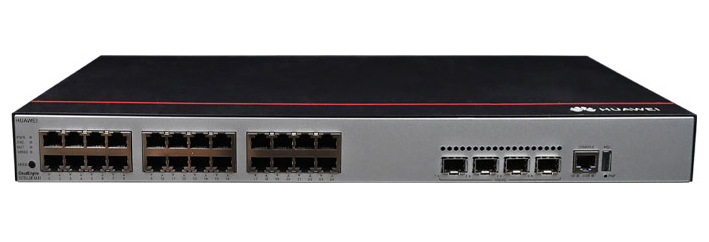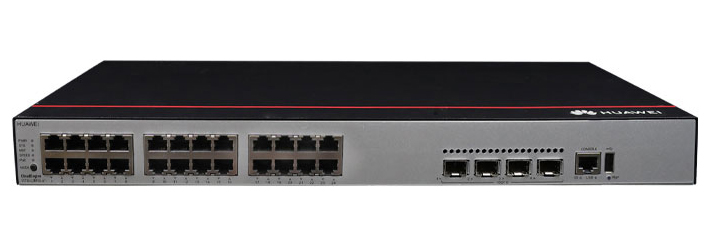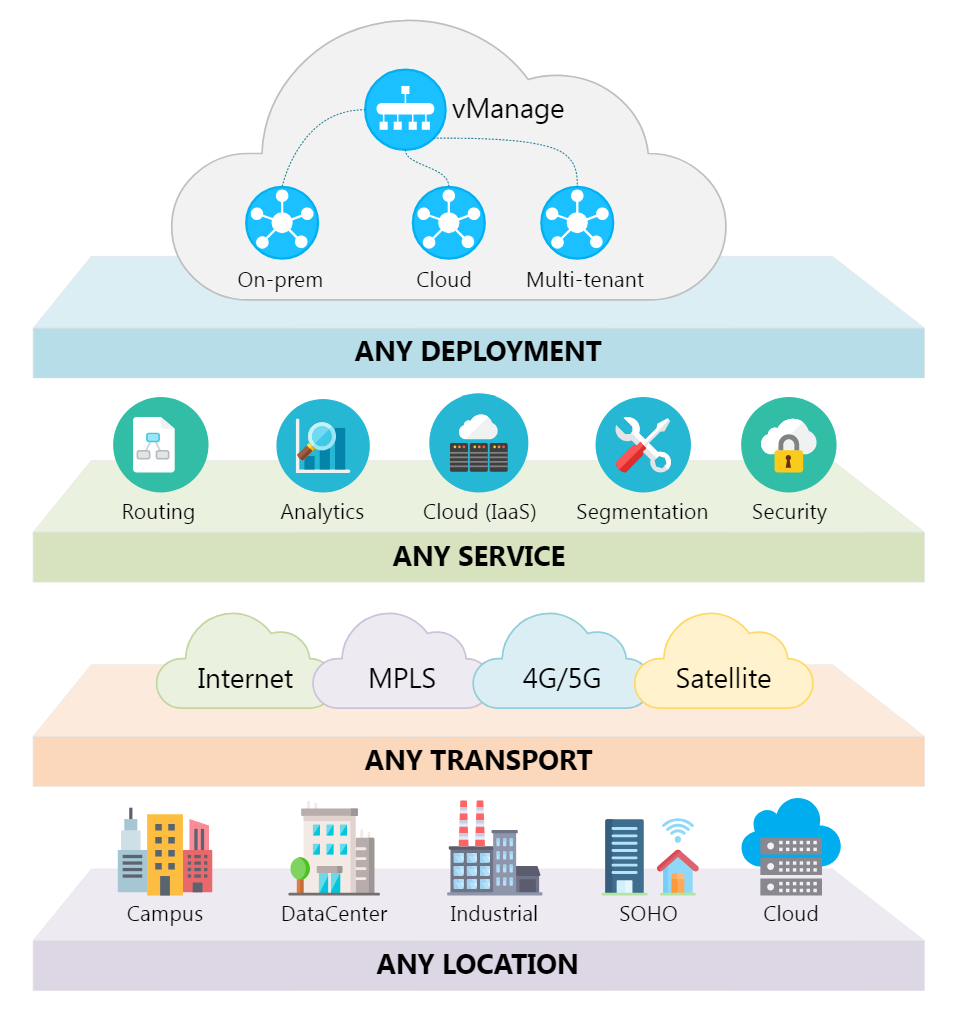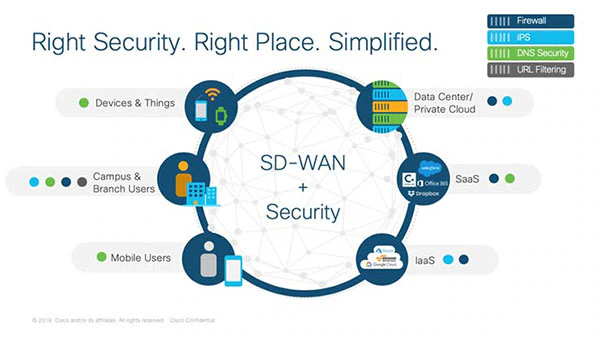
































What is the Cisco SD-WAN?
Cisco SD-WAN is a Wide Area Network (WAN) voir aussi: overlay architecture that applies the principles of Software-Defined Networking (SDN) into the traditional WAN. It is designed to meet the needs of modern enterprise applications and the rapidly growing security requirements.
What is the new name for Cisco SD-WAN?
SD-WAN - vBond is now called Cisco Catalyst SD-WAN Validator. SD-WAN - vSmart is now called Cisco Catalyst Controller.
What is an SD-WAN used for?
A software-defined wide area network (SD-WAN) is a virtual WAN architecture that allows enterprises to leverage any combination of transport services — including MPLS, LTE and broadband internet services — to securely connect users to applications.
What is benefit of Cisco SD-WAN?

Cisco SD-WAN provides advanced analytics, monitoring, and automation for any connection across your network, whether Multiprotocol Label Switching (MPLS) or beyond the cloud edge.
What is the difference between Cisco MPLS and SD-WAN?
MPLS requires organizations to use the same carrier at all WAN-connected sites because MPLS connections have to be configured in physical routers in the adjacent network. SD-WAN connections run over the regular Internet; any ISP can support an SD-WAN connection. SD-WAN routing is more flexible.
What is the difference between Cisco SD-WAN and VPN?
SD-WAN can incorporate VPN functionalities, but it doesn't outright replace VPNs. While SD-WAN provides optimized network connectivity, path selection, and application-aware routing across wide area networks, VPNs specifically provide encrypted tunnels for secure data transmission over the internet.
What is SD-WAN and why it's replacing MPLS?
Furthermore, SD-WAN creates encrypted tunnels over the internet, while MPLS doesn't directly support encryption but is partitioned from the internet. Today, it's widely agreed that SD-WAN is more cost-effective, flexible, and secure than MPLS.
Who did Cisco buy SD-WAN from?
Viptela Inc.
The Cisco SD-WAN Solution
Which is why, in August of 2017, Cisco acquired Viptela Inc. —a privately held software-defined WAN provider—to architect a new generation of intent-based networking solutions.
Is SD-WAN the future?
The SD-WAN of the future: AI-enhanced.
Thus, it has the potential to improve network performance. Better predictive network maintenance: Networking teams will likely be able to employ AI to do predictive maintenance since it can identify anomalies with the network and then proactively address them.
What is disadvantage of SD-WAN?
Depending on your vendor or service provider, on premise equipment may represent a high cost. The majority of SD-WAN services are provisioned over the public Internet with no end to end QoS for traffic flow (Quality of Service).
Why do companies need SD-WAN?
SD-WAN decouples network software services from underlying hardware to create a virtualized network overlay. Enabling the connection of users anywhere to applications anywhere, SD-WAN offers flexibility, simplicity, performance, security, and cloud scale.
What is the difference between SD and SD-WAN?
SDN delivers to local-area networks, whereas SD-WAN delivers to wide-area networks. SD-WAN connects multiple locations, so they can securely send sensitive data back and forth. These networks are built to support WANs that spread across multiple, far-apart, geographical areas.
What is the Cisco SD-WAN concept?
The concept of SD WAN is based around the centralized management of network functions away from the WAN edge, the ability to steer cloud applications & traffic with QoS, next-generation firewalls & associated security, simplified management and NFV.
Why is SD-WAN popular?
SD-WAN Improves the User Experience.
This translates into better performance, lower latency and higher performing connectivity. It also reduces the time and effort required to set up and manage branch offices, so users have access to applications faster.
What are the benefits of SD-WAN?

SD-WAN offers carrier-independent connectivity, leading to improved bandwidth availability and WAN redundancy, while also enabling direct access to SaaS and cloud-based applications, enhancing performance by eliminating the need to route all application traffic through a centralized data center.
How does SD-WAN work?
SD-WAN allows automatic provisioning of application policies that align to business intent. Intelligently steering traffic based on service level agreements (SLAs), SD-WAN ensures application performance is maintained, while continuously measuring WAN performance.
Is SD-WAN cheaper than MPLS?
Compared to Multiprotocol Label Switching (MPLS), Software-defined Wide Area Networks (SD-WAN) can be less expensive, more secure, and provide higher performance. MPLS can have steep bandwidth costs, while SD-WAN protects your network from vulnerabilities that MPLS cannot.
Is SD-WAN the same as firewall?
SD-WAN leverages software-defined networking for optimizing and streamlining the network traffic, unlike firewalls that mainly aim at perimeter security. Companies can dynamically route the traffic based on real-time connections, like bandwidth availability and network congestion with SD-WAN.
Is SD-WAN just a VPN?
SD-WAN and VPN solutions can complement each other, but an SD-WAN doesn't replace a VPN. An SD-WAN optimizes and manages connections between several locations (like data centers and branch offices). A VPN is a security technology that encrypts internet connections and provides secure remote access to a private network.
Is SD-WAN a private network?
Finally, unlike MPLS, SD-WAN is not a private network. For that reason, security tends to be bolted on and is usually an afterthought; creating complexity and security risks. Pros: SD-WAN is can offer increased flexibility and agility, improved user experience, and reduced cost.
Is SD-WAN still relevant?
SD-WAN remains a powerful tool for network management, but it's essential to weigh its advantages and limitations carefully. As emerging technologies continue to reshape the networking landscape, businesses should remain agile, ready to adapt to new solutions while leveraging the proven capabilities of SD-WAN.
Is SD-WAN a layer 2 or 3 network?
Is SD-WAN a Layer 2 or 3 network? SD-WAN appliances often have built-in Layer 3 to Layer 7 security capabilities that can secure application traffic both intrabranch and interbranch.
What are three main components of SD-WAN?
SD-WAN can be broken down into three layers:
Management and orchestration.
Control, data plane, and security.
Network access.
What is an example of a SD-WAN?

Some examples of SD-WAN use cases include: Connecting major offices & HQs to each other, or central data-centres. Connecting data-centres to each other. Connecting branch sites to HQ or a data-centre.
Is SD-WAN hardware or software?
A software-defined WAN (SD-WAN) is a more flexible WAN architecture that can take advantage of multiple hardware platforms and connectivity options. The controlling software works with any networking hardware. An organization can set up an SD-WAN using off-the-shelf hardware rather than specialized hardware.
What does SD-WAN replace?
The best alternative to MPLS is an SD-WAN network. SD-WAN is a virtual WAN architecture. It uses software to abstract the networking layer, allowing you to use varying connection types interchangeably. Connectivity options include MPLS, broadband, dedicated internet access (DIA), and LTE.
Is SD-WAN better than VPN?
Overall, SD-WAN offers more comprehensive security and better performance than VPN. SD-WAN is also more reliable, as it includes a security feature that automatically repairs a service failure by transferring an IP address to another network. Perhaps most importantly, SD-WAN is scalable whereas VPN is not.
What problems does SD-WAN solve?
SD-WAN, on the other hand, can connect branches directly to the data center, the cloud or to Software as a Service applications, shortening transit time, reducing overhead, eliminating bottlenecks and enhancing application performance.
How many companies use SD-WAN?
Currently, 79% of organizations use SD-WAN solutions, and that number is expected to rise to 92% by 2026. As more organizations rely on the cloud to support their work-from-anywhere staff, SD-WAN is the solution to solving their network performance problems – and that's not all SD-WAN has to offer.
How does Cisco SD-WAN work?
Cisco SD-WAN Manager communicates with edge devices and controllers using a secure channel—either a datagram transport layer security (DTLS) tunnel or transport layer security (TLS) tunnel. Within this secure channel, it communicates with the devices or controllers using the NETCONF protocol, within an SSH session.
Why is SD-WAN better than WAN?
Traffic control: SD-WAN offers full oversight and control over traffic in a way that traditional WAN can't match. As such, bandwidth is distributed and used more efficiently. Also, real-time traffic shaping improves operations across the board without infringing on any compliance requirements.
Why do we need SD-WAN?
An SD‑WAN assures consistent application performance and resiliency, automates traffic steering in an application-driven manner based on business intent, improves network security, and simplifies the WAN architecture.
Is SD-WAN better than MPLS?
MPLS services often include quality-of-service (QoS) guarantees. SD-WAN leverages best effort Internet services and may experience occasional packet loss. However, most SD-WAN services compensate for this by intelligently steering traffic away from lossy connections. MPLS is better for real-time applications.
For Cisco product list and quote, please visit: https://www.hi-network.com/categories/cisco or contact us at www.hi-network.com (Email: [email protected])
 Tags chauds:
réseau
SDWAN
Tags chauds:
réseau
SDWAN